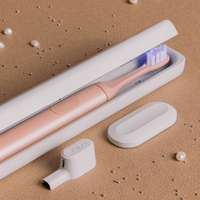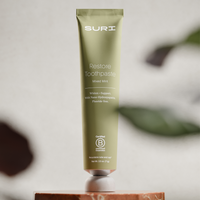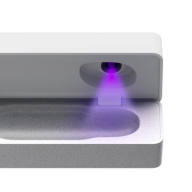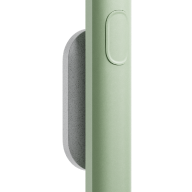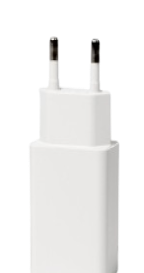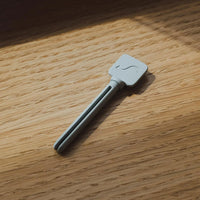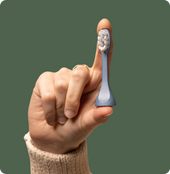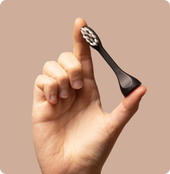A Tale of Two Actives: Why Nano-Hydroxyapatite is a Proven Alternative to Fluoride
Author: Dr Mounir Atassi, BDS, PhD, EMBA
For decades, fluoride has been the undisputed gold standard in caries prevention—a cornerstone of public health guidance and clinical practice in the UK and globally. Its efficacy is supported by a vast body of evidence.
At the same time, the landscape of preventive dentistry is continually evolving. A growing body of robust evidence is highlighting the efficacy of nano-hydroxyapatite (n-HAp), a biomimetic alternative for remineralisation and desensitisation. The goal isn’t to replace fluoride, but to understand the distinct advantages of n-HAp as another evidence-based tool for dental professionals.
This post provides a balanced, scientific overview for dentists and dental hygienists considering n-HAp for their patients.
How They Work: Two Effective Approaches to Remineralisation
Understanding the different mechanisms of n-HAp and fluoride is key to appreciating their respective roles in modern oral care. Both are highly effective, but they achieve their results in different ways.
Nano-Hydroxyapatite (n-HAp) is a biomimetic material, meaning it is identical to the mineral that naturally makes up tooth enamel and dentine. Its primary mode of action is to act as a direct mineral building block.
1. The key advantage is its particle size. Being "nano-sized" allows the particles to physically penetrate deeper into the microscopic pores and fissures of demineralised enamel.
2. This creates a "top-down" remineralisation, rebuilding the enamel structure from within by filling these gaps with the tooth's own native mineral. It also occludes open dentinal tubules to relieve sensitivity.
Fluoride is a naturally occurring mineral that acts as a powerful catalyst for remineralisation.
1. It works by adsorbing to the enamel surface and attracting calcium and phosphate ions from saliva.
2. It then incorporates into the tooth's crystal lattice to form fluorapatite (Ca5(PO4)3F). This newly formed mineral compound is more resistant to acid attack than the original hydroxyapatite, effectively strengthening the tooth surface.
In essence, n-HAp directly repairs and restores enamel by depositing the same mineral it's made of, while fluoride enhances the natural repair process to create a more resilient tooth surface.
At a Glance: n-HAp vs. Fluoride
| Feature | Nano-Hydroxyapatite (n-HAp) | Fluoride |
|---|---|---|
| Primary Mechanism | Direct Deposit (Biomimetic): Physically penetrates and integrates into enamel and dentine to rebuild the tooth structure. | Catalytic Action: Promotes the uptake of calcium and phosphate from saliva to form a new, more acid-resistant mineral (fluorapatite). |
| Key Advantage | Deeper Remineralisation: Nano-size allows for penetration and repair of subsurface lesions from within. | Proven Caries Prevention: The long-standing gold standard with extensive evidence for strengthening enamel against acid attack. |
| Hypersensitivity | Occludes Tubules: Physically blocks open dentinal tubules, providing effective and lasting sensitivity relief. | Effective Reducer: Also reduces sensitivity, often included in desensitising formulations. |
| Composition | Nature-Identical: The same mineral (Ca5(PO4)3OH) that comprises 97% of enamel and 70% of dentine. | Natural Mineral: A naturally occurring element widely used in public health for its oral benefits. |
| Best For | Patients seeking a fluoride-free option, those with sensitivity, or those who may benefit from its deep remineralisation properties. | The established standard of care for caries prevention is for most patients. |
The Clinical Evidence for Deeper Remineralisation 🦷
Research increasingly shows that n-HAp's performance is comparable to, and in some aspects advantageous over, that of fluoride toothpastes.
- The in-vitro study by Tschoppe et al. (2011) found that n-HAp showed higher remineralising effects in deeper bovine dentine lesions compared to amine fluoride toothpastes.
- A 2021 study observed that the carious lesion in the n-HAp group had a greater lesion depth reduction than both fluoride and tricalcium phosphate groups.
- Further research by Huang et al. (2011) found that under acidic conditions that simulate a carious attack, n-HAp can significantly accelerate the rate and depth of penetration of remineralisation.
- Clinically, a key RCT by Schlagenhauf et al. (2019) established that daily use of microcrystalline HAp was non-inferior to a 1,400 ppm fluoride toothpaste in preventing caries progression in orthodontic patients.
Tackling Dentin Hypersensitivity ⚡
Beyond remineralisation, n-HAp's mechanism makes it highly effective for managing dentin hypersensitivity.
- An in-vitro study by Yuan et al. (2019) confirmed that n-HAp particles effectively occluded dentinal tubules, providing a clear mechanical reason for its desensitising power.
- This is supported by clinical data. An RCT by Vano et al. (2017) concluded that an n-HAp gel delivered significant sensitivity reduction at two and four weeks, performing on par with fluoride-based treatments.
A Credible Clinical Choice for Your Patients
The evidence is clear: nano-hydroxyapatite is a scientifically validated active ingredient that matches the efficacy of fluoride in remineralisation and sensitivity relief.
Fluoride remains the cornerstone of preventive dental care, with decades of proven success. Nano-hydroxyapatite does not seek to challenge this, but rather presents itself as a highly effective, biomimetic alternative for clinicians and patients. It is a particularly compelling option for patients seeking fluoride-free care or for those with specific sensitivity or remineralisation needs that could benefit from its deep-penetrating, direct-deposit mechanism.
Have a Question or Interested in a Trial?
We encourage you to review the evidence and consider how an n-HAp toothpaste could benefit your patients.
If you have any further questions or would like to discuss trying SURI's n-HAp toothpaste in your practice, please do not hesitate to email our Head of Dental, Dr Mounir Atassi, at dental@trysuri.com.
